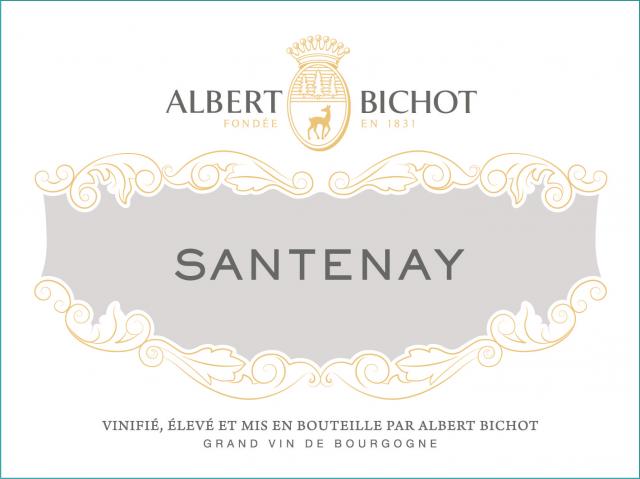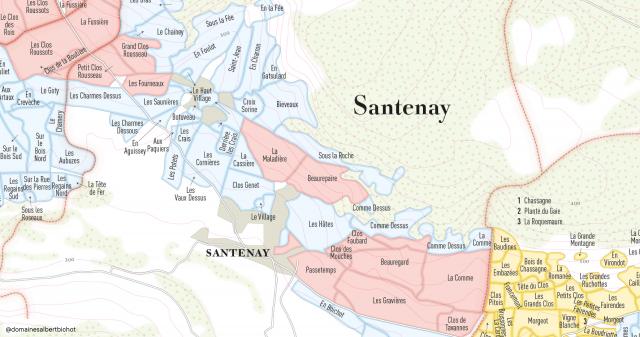Presentation
Presentation
Located at the southern extremity of the Côte de Beaune, Santenay was known in Gallo-Roman times for its hot springs. The source "Santinae aquae" (healing waters) gave the village its name.
The appellation's 830 acres cover the lower slopes of the Mont-de-Sène hill, at altitudes of up to 300 metres where the vines benefit from idea exposure ranging from eastern to southern.
Although the wines are red for the most part, some terroirs are well-suited to the cultivation of Chardonnay grapes, which yield precise, elegant wines.
The appellation's 830 acres cover the lower slopes of the Mont-de-Sène hill, at altitudes of up to 300 metres where the vines benefit from idea exposure ranging from eastern to southern.
Although the wines are red for the most part, some terroirs are well-suited to the cultivation of Chardonnay grapes, which yield precise, elegant wines.
Presentation video
Terroir
Limestone soil containing marls
Winemaking
Handpicking, sorting of the grapes, gentle pressing so as to respect the fruit.
Alcoholic fermentation and aging on fine lees in oak barrels (15 to 20% new barrels) for 14 to 16 months.
Alcoholic fermentation and aging on fine lees in oak barrels (15 to 20% new barrels) for 14 to 16 months.
Varietal
Chardonnay


Advice
Serving
Serve between 12 and 14°C (53-57°F).
To enjoy young on the fruit or to keep 3 to 5 years.
To enjoy young on the fruit or to keep 3 to 5 years.
Tasting
The nose features delicate scents of white flowers, citrus and exotic fruits. The palate is full bodied and rich, and also boasts minerality with saline accents, lending freshness and energy to the overall tasting experience.
Food pairings
Finely prepared fish and seafood
Roasted or stewed poultry and white meats
Roasted or stewed poultry and white meats
Quotes
Wine Spectator: 90/100 (2022)
Wine Enthusiast: 90/100 (2019)
Wine Spectator: 88/100 (2018)
Wine Enthusiast: 90/100 (2019)
Wine Spectator: 88/100 (2018)



